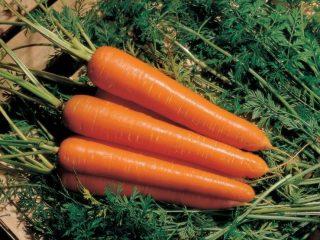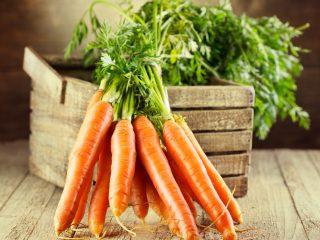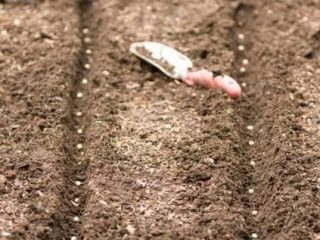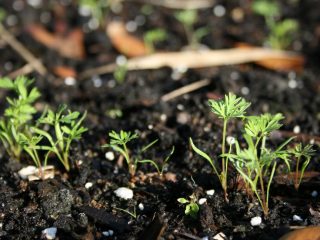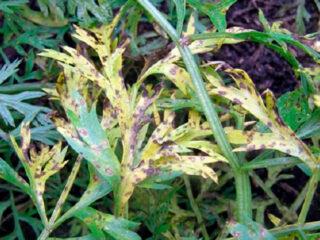Content
- 1 History of origin
- 2 Description of carrot variety Children's sweetness
- 3 Characteristics of carrots Children's sweetness
- 4 Advantages and disadvantages
- 5 Features of planting and care
- 6 Pest and disease control
- 7 Harvesting and storage
- 8 Conclusion
- 9 Reviews from gardeners about carrots Children's sweetness
Breeders are constantly working to develop carrots that not only have excellent technical characteristics, but also have great taste. A whole series of root vegetables with a high content of sugars and carotene has been released. One of the most famous varieties is the Children's Sweet carrot.
History of origin
Carrot (daucus carota subsp. sativus) Children's sweetness was obtained at the Russian Seeds research and production company. In 2010, it was included in the State Register of Breeding Achievements, recommended and approved for cultivation in the regions of the Central Black Earth region of the Russian Federation.
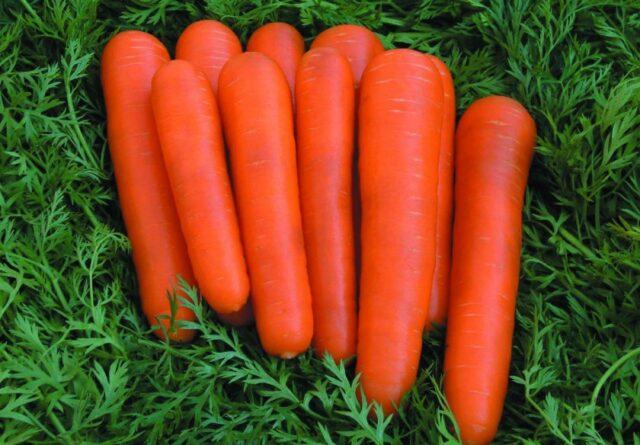
The authors of the variety Children's Sweetness are Z. S. Vinogradov and A. S. Semin.
Carrot Children's sweetness is one of many created on the basis of the Polish variety Amsterdamska (daucus sativus Amsterdamska). Spojnia scientists received it at the end of the last century.The undoubted advantages of Amsterdam carrots are their undemandingness to soil and weather conditions. They were the reason that the Polish variety gave rise to new Russian ones, in particular, Children's sweets.
Description of carrot variety Children's sweetness
The plant forms a spreading rosette of dissected foliage of medium length. Its color is bright green. Root vegetables of the Children's Sweet variety are dense, smooth, cylindrical in shape, with a pointed tip. The surface is smooth, the flesh is without a core. The color is bright orange, uniform throughout the entire volume. Under favorable conditions, carrots reach 20 cm in length and weigh about 200 g. Mature root vegetables are distinguished by a high sugar content (8.4 g) and carotene (18 mg) per 100 g of product. Due to its sweet taste, it is used in baby food, consumed fresh and after heat treatment.
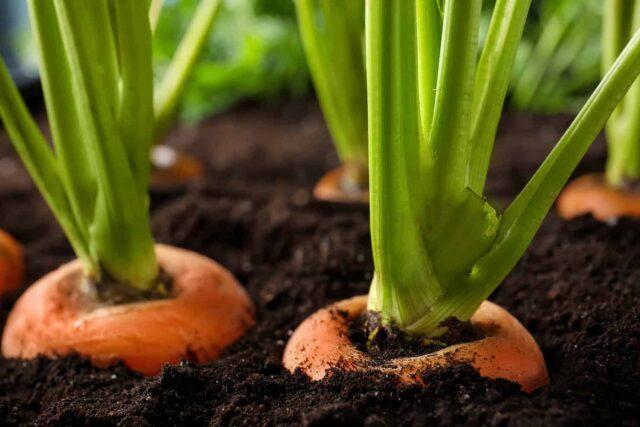
During the growth period, the root crops of the Children's Sweet variety often protrude above the surface of the ground
Characteristics of carrots Children's sweetness
The variety belongs to the mid-early variety. It is frost-resistant and can be sown in spring or before winter, when the air temperature drops to +5 ⁰C. Baby sweet carrots are drought-resistant and require regular watering in the first half of the growing season. The taste is excellent, the variety is recommended for making juices, purees, and winter preparations. Root crops are highly transportable and have a long shelf life if the necessary conditions are met - temperature and humidity.
Maturation period
To achieve technical ripeness of the Children's Sweet variety, 110 to 130 days are required after the appearance of the first shoots. Most often, root crops are dug up and stored in the second ten days of September.When sowing before winter, harvesting begins 2-3 weeks earlier than usual. Carrots can be used fresh starting in July, but during this period they are not sweet enough and cannot be stored for long.
Carrot yield Children's sweets
Growing vegetables on an industrial scale gives a yield of 290-330 c/ha. When conducting varietal tests, the greatest result was achieved in the Voronezh region - 647 c/ha. On personal plots, the average yield is 4-7 kg/m2.
The performance of this characteristic is influenced by several factors:
- Illumination of the area.
- Soil quality.
- Compliance with sowing deadlines.
- Annual crop rotation.
- Timely thinning of plants.
- Regular watering, loosening, removing weeds.

Growing carrots in the shade not only reduces yield, but also prevents the root crops from accumulating enough sugars
Resistance to diseases and pests
The Children's Sweet variety is not particularly resistant to diseases and damage from insect pests. To increase these indicators, it is necessary to carry out pre-sowing disinfection of the soil and seeds, follow the agricultural techniques for growing carrots, harvest the crop in a timely manner, do not cause mechanical damage to the root crops, and store them correctly.
Growing regions
The carrot variety Children's Sweetness is recommended for cultivation in the Central Black Earth Region, but despite this, it can be successfully cultivated in most other regions. To obtain a guaranteed harvest, sowing dates should be adjusted depending on climatic conditions:
- In central Russia, planting should be carried out in the third ten days of April.
- In Siberia - in early May.
- In the southern regions - in mid-March, while the soil remains moist.
Advantages and disadvantages
The sugar content in the Children's Sweet variety is twice the average for carrots.
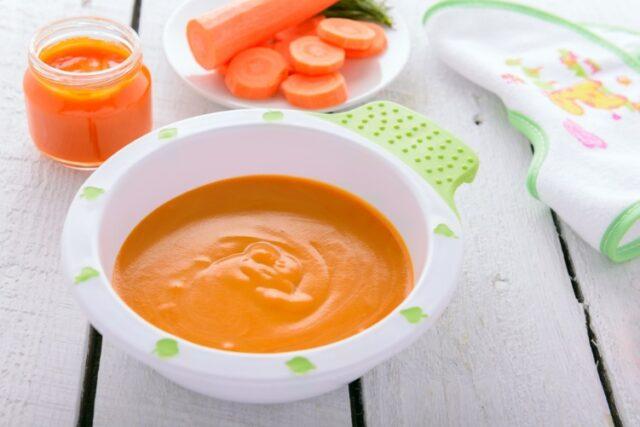
The sweet root vegetable is ideal for preparing baby food and diet food.
Pros:
- excellent taste;
- juiciness of root vegetables;
- possibility of cultivation in most regions;
- high transportability;
- storage duration;
- resistance to low air temperatures;
- stable and regular harvest;
- obtaining seeds with preservation of varietal characteristics.
Minuses:
- low immunity to major diseases and damage from insect pests;
- the need to hill up root crops protruding above the surface;
- high demands on soil fertility.
Features of planting and care
Baby sweet carrots prefer light, loose loamy or sandy loam soil. It is carefully dug up, weeds are removed, and complex mineral fertilizer is applied immediately before sowing. On the prepared beds, furrows are made 2-3 cm deep with an interval of 20 cm between rows. Seeds are sown in late April, early May, when the air temperature reaches +16-20 ⁰C. Granules are placed at a distance of 3 cm from each other, regular seeds - more often.
Before the first shoots, the furrows are watered twice a week; after the seedlings appear, they are reduced to once. Three weeks before harvesting, moistening is stopped.
To obtain high-quality vegetables, it is necessary to thin out the seedlings several times. First, leave a gap of 2 cm between the plants, and later, when the diameter of the root crops reaches 1.5 cm, increase it to 5 cm.
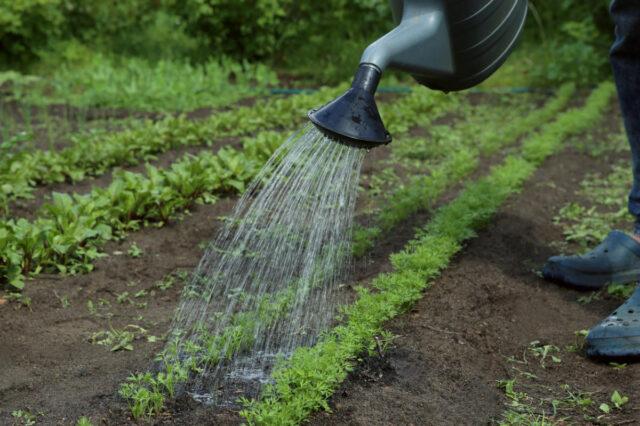
Each watering is completed by loosening the soil and hilling the tops of root crops
Pest and disease control
In case of unfavorable weather conditions or violation of agricultural practices, the risk of diseases in carrots increases. Children's sweetness. Plants should be inspected periodically to begin treatment at an early stage.
Bacteriosis
The very first signs of the disease are yellowing of the lower leaves. Later they turn brown, and sunken brown spots appear on the roots. There is no treatment for the disease; diseased carrots are removed and disposed of.
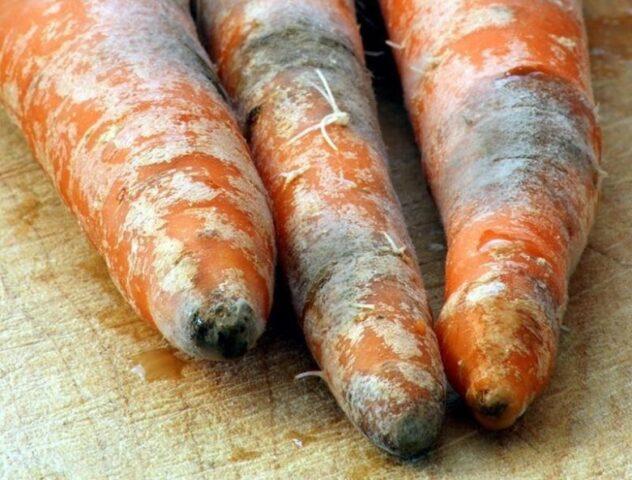
Root crops infected with bacteriosis emit an unpleasant odor
Brown spot
A fungal infection occurs as a result of a violation of growing technology. The foliage first turns brown and later dries out. After the disease spreads to the root crops, they begin to rot.
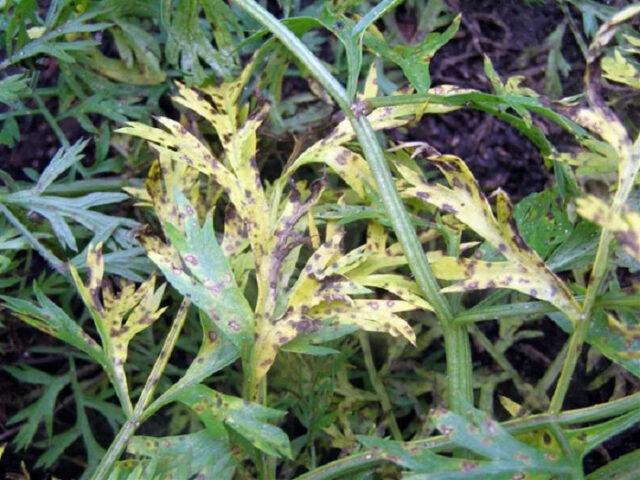
At the first signs of brown spot, diseased plants are burned and the soil is treated with a solution of copper sulfate
Powdery mildew
White spores appear on the petioles and leaves, which gradually become denser. Later, brown spots form at the site of the lesion, the foliage dries and falls off. Pollination with ash and spraying with fungicides are used as treatment.
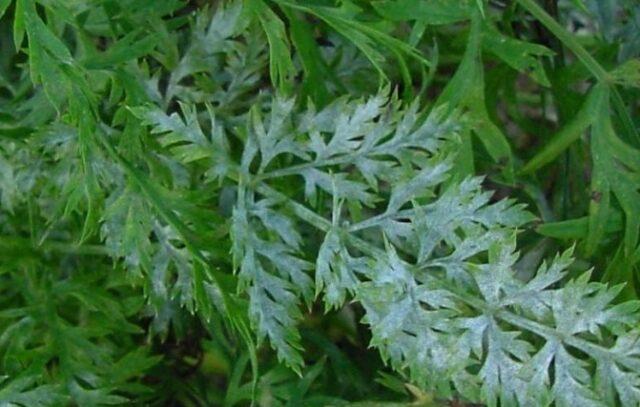
When affected by powdery mildew, root crops stop growing
carrot fly
The insect is considered the main pest of carrots, and it is not the fly itself that spoils the root crops, but its larvae. Despite the fact that the Children's Sweet variety is considered more resistant to pest damage, the damage it causes cannot be underestimated. Insecticides are used to control carrot flies.
For prevention purposes, it is necessary to promptly loosen the soil, thin out the seedlings, and prevent waterlogging of the soil.
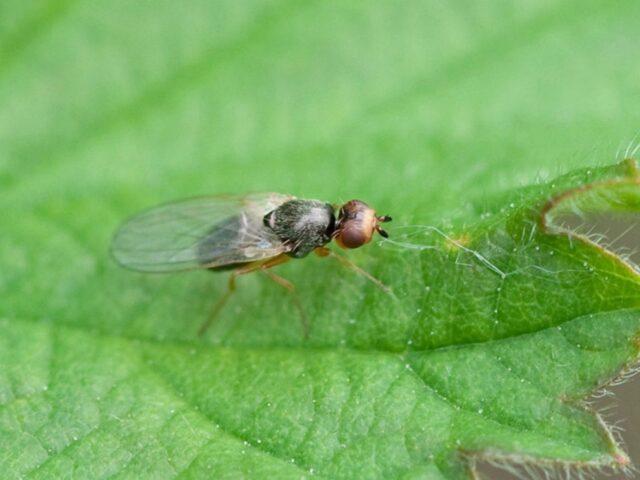
The first symptom of carrot fly infestation is a change in foliage color to purple-red.
Harvesting and storage
Children's sweet carrots begin to be harvested in the first ten days of September, when its lower leaves begin to dry. Root crops dug up in dry sunny weather are dried, the tops are trimmed, sorted and only healthy, undamaged specimens are stored. The rest of the carrots are processed and stored for the winter. Optimal conditions for long-term storage are air temperature from 0 ⁰С to +5 ⁰С, humidity from 90% to 95% and the presence of ventilation in the room.
Conclusion
Carrots are a children's sweet suitable for making purees, juices, and dietary foods. By choosing it to grow on your plot, already in July you can get a vitamin product that even children will enjoy.
Reviews from gardeners about carrots Children's sweetness

